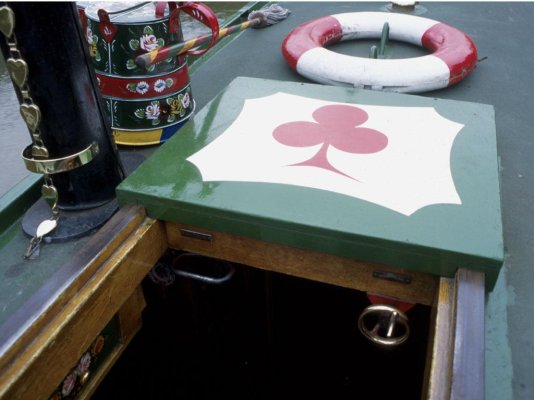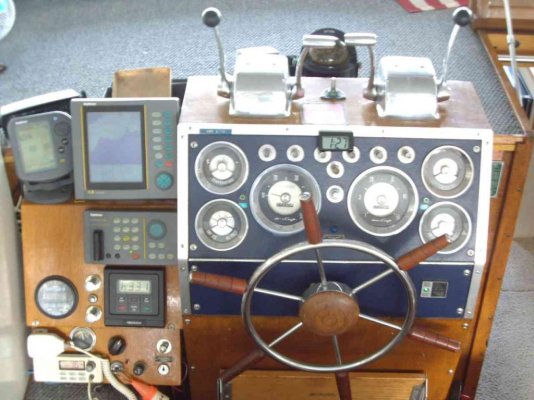Shoalwaters
Guru
- Joined
- Feb 24, 2008
- Messages
- 681
- Location
- St. Lucia, West Indies
- Vessel Name
- "Dragon Lady"
- Vessel Make
- DeFever 41
Sportfishermen produce sufficient horsepower at idle that it is seldom necessary to touch the throttles when manoevering. Trawlers and the like with smaller engines must often find need for a little extra "wellie". There you are trying to get her turned round in a confined marina with a strong cross-wind; one shifter ahead, one astern, both throttles forward a notch. Some serious coordination is called for and the opportunities for getting things horribly wrong are nearly endless: both shifters to neutral and the engines howl in outrage because you didn't pull the throttles back first etc, etc. How much easier and more intuitive it would be if the shift and throttle functions were combined in one lever: first notch selects fwd or reverse, further movement increases rpm. IIRC, Morse do/did manufacture a combined unit like this, but I have only seen it on sailboat auxiliaries. Am I alone in being throttle/shifter challenged? Are there reliability or technical problems in providing this feature with two helm stations?
BTW. I once had a ride on a crew-boat that had three engines with separate shift and throttle levers for each. The guy at the helm was as busy as a one-armed paper hanger, but he could make that boat walk sideways.
Mike
BTW. I once had a ride on a crew-boat that had three engines with separate shift and throttle levers for each. The guy at the helm was as busy as a one-armed paper hanger, but he could make that boat walk sideways.
Mike


